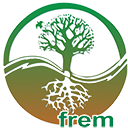Deep Learning–eXtreme Gradient Boosting ensemble approach for reliable additive mapping of above- and belowground carbon pools in tropical dry dipterocarp forests from Sentinel-2 imagery
This guideline, which includes an executable package, was developed based on the following reference:
Huy, B., Poudel, K.P., Temesgen, H., Braun, A.C., Truong, N.Q., Tri, P.C., Hien, N.T., Khiem, N.Q. (2025). Deep Learning–eXtreme Gradient Boosting ensemble approach for reliable additive mapping of above- and belowground carbon pools in tropical dry dipterocarp forests from Sentinel-2 imagery. Journal …..
Download the article
The provided executable package enables the application of the best-performing ensemble Deep Learning–eXtreme Gradient Boosting (DLXG) model to predict and map the additive aboveground carbon pool (AGCP), belowground carbon pool (BGCP), and their total (TGCP) using Sentinel-2 imagery in tropical dry dipterocarp forests.
By leveraging newly processed Sentinel-2 spectral bands, vegetation indices, and texture features, the DLXG model employs six optimized predictive raster layers: SAPI, NDVI, V_SR45, SWIR2, V_RED.EDGE3, and V_GREEN.
Step-by-step instructions:
1. Download and extract the package
Download and extract the folder DLXG Executable Package.rar, which contains the following files:
- DL_model_final.h5 – Trained deep learning model
- Final_Residual_Stacking_XGB.pkl – Trained XGBoost model
- prediction_rasters_DLXG.exe – Executable package for automated prediction.
2. Prepare input data
Place your six updated Sentinel-2 raster files in the same folder as the executable files. The required input files are: SAPI.tif, NDVI.tif, V_SR45.tif, SWIR2.tif, V_RED.EDGE3.tif, and V_GREEN.tif
3. Run the prediction
Double-click the executable package named ‘prediction_rasters_DLXG.exe’. This will run the best- performing DLXG model to generate the final prediction maps.
⏳ Note: The entire process may take several minutes depending on your system specifications and the size of the input rasters.
4. Output files
Upon successful completion, the following output raster files will be saved in the same folder:
- AGCP_DLXG.tif – Aboveground Carbon Pool
- BGCP_DLXG.tif – Belowground Carbon Pool
- TGCP_DLXG.tif – Total Ground Carbon Pool (AGCP + BGCP)
These raster outputs (AGCP_DLXG.tif, BGCP_DLXG.tif, and TGCP_DLXG.tif) are ready to be used for spatial analysis, carbon accounting, and decision-making in tropical dry dipterocarp forest ecosystems. They represent an additive predictive mapping approach that integrates Deep learning and XGBoost models into a novel ensemble learning framework using remote sensing inputs.
————————————–
Note: SAPI (Scatter-Adjusted Pigment Index), NDVI (Normalized Difference Vegetation Index), V_SR45 (Texture variance derived from Simple Ratio 45), SWIR2 (Band 12), V_RED.EDGE3 (Texture variance derived from RED.EDGE3, Band 7), and V_GREEN (Texture variance derived from GREEN, Band 3).
____________________________________________________________________________________________________________________________
Deep learning additive models for simultaneous prediction of stand level above- and belowground biomass in tropical forests
Guideline for Applying the Executable Package:
This package enables the application of the best-developed Deep Learning Additive Models (DLAMs) for simultaneously predicting stand-level above- and belowground biomass and total (AGB, BGB and ABGB, respectively), while ensuring additivity in tropical forests.
This executable package was developed based on the following reference:
Huy, B., Poudel, K.P., Temesgen, H., Salas-Eljatib, C., Truong, N.Q., Khiem, N.Q. (2025). Comparing statistical and deep learning approaches for simultaneous prediction of stand-level above- and belowground biomass in tropical forests. Science of the Total Environment 958 (2025) 177869. DOI: https://doi.org/10.1016/j.scitotenv.2024.177869
Download the article.
For detailed methodology and application, please refer to this publication.
Please follow the steps below to apply the executable package:
- Please download the folder DLAMs executable packages.rar then save and extract it to your computer.
- Choose one of the following subfolders based on your preferred predictive covariates:
- DLAMs 1: Includes seven optimal predictive covariates (stand basal area (G), stand volume (V), mean annual temperature (T), elevation (EL), forest type (FT), average height (Hg), and soil group (SG)).
- DLAMs 5: Includes five predictive covariates (stand basal area (G), stand volume (V), mean annual temperature (T), elevation (EL), average height (Hg)).
- DLAMs 9: Uses only one predictor: stand basal area (G).
- DLAMs 10: Uses only one predictor: stand volume (V).
- Enter your new predictor values into the file named ‘predictors data.csv’ located in this subfolder.
- Units of numeric variables: G (m2/ha), V (m3/ha), T (oC), EL (m), Hg (m)
- Using acronyms for nominal categorical variables: FT (DDF for Dry Dipterocarp Forest or EBLF for Evergreen Broadleaf Forest), and SG (FA for Ferric Acrisols, OA for Orthic Acrisols, and RF for Rhodic Ferrasols).
- Double-click on the file named ‘prediction.exe’ in this subfolder to start the prediction process. Please allow a few minutes for the program to complete its process.
- As a result, a new file named ‘prediction.csv’ will be created in this subfolder, containing simultaneous predictions of stand-level aboveground biomass (AGB, tons/ha), belowground biomass (BGB, tons/ha), and total (ABGB, tons/ha), ensuring additivity.




